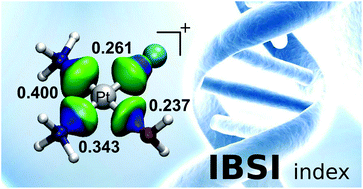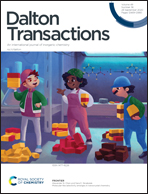Novel approach to accurately predict bond strength and ligand lability in platinum-based anticancer drugs†
Abstract
Prompted by the antineoplastic properties of cisplatin, a plethora of platinum(II)-based complexes have been synthesized in the past decades. At present, their rational design is based on a number of structure–activity relationships involving the nature of the ligands initially coordinated to platinum(II): either non-labile (acting as a carrier) or labile (undergoing substitution). The coordinate bond strength of the labile ligand plays a key role in the first step of the drug mechanism of action, i.e., the hydrolysis process, which is associated to the retention time of the medicine in the body. Therefore, an accurate determination of the metal–ligand bond strength becomes highly relevant as it will help the rational design of novel chemotherapeutic agents. Herein, we challenge the recently developed intrinsic bond strength index (IBSI) as a rapid and practical tool to assess the ligand lability in Pt(II) complexes. In a first stage, given the importance of the trans-effect in synthetic strategies of cisplatin-based drugs, the effect of eleven trans-directing ligands T is quantified in two sets of complexes [Pt(NH3)2(H2O)T]n+ and [PtCl2(NH3)T]m+ where T = H2O, F−, NH3, Cl−, Br−, I−, SO32−, CH3−, CN−, CO, and H−. An essential outcome of this work is a novel index IBSItrans = IBSIσ + IBSIπ able to rank the directing ligands by their trans-effect according to their σ-donation and π-backbonding electronic contributions. In a second stage, we apply the IBSI score to a panel of eleven case studies, comprising mostly antineoplastic agents, such as cisplatin, carboplatin, lobaplatin etc., in order to quantify the coordinate bond strength of the ligands, providing insights about the hydrolysis process. The obtained results, in good agreement with experimental data and reported theoretical studies, demonstrate that the IBSI score is able to deliver a rapid and reliable picture of the coordinate bond strength, representing a chemically intuitive tool helpful for the development of novel anticancer agents prior to synthetic efforts.



 Please wait while we load your content...
Please wait while we load your content...